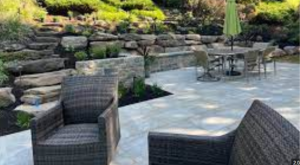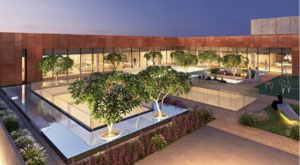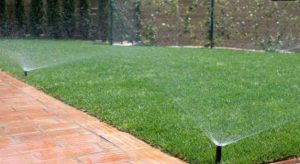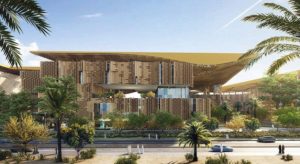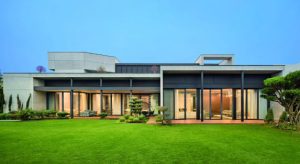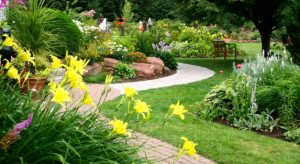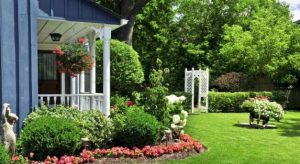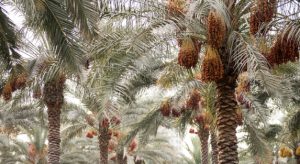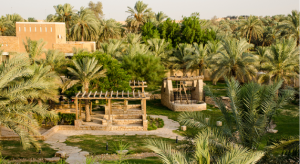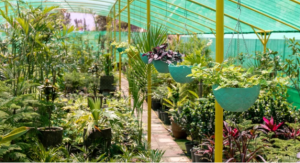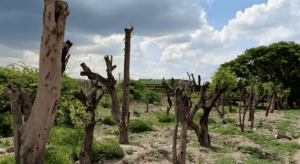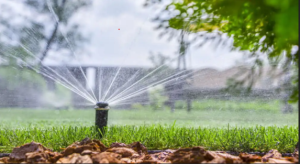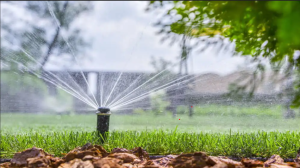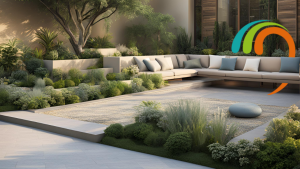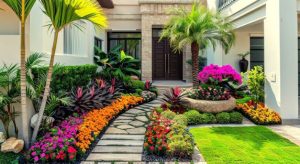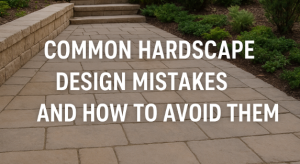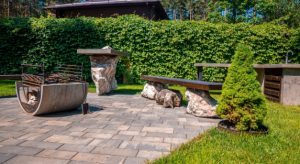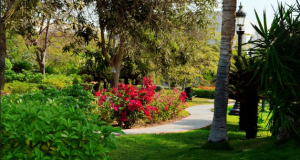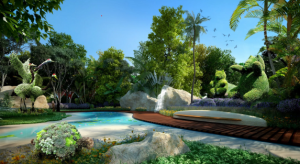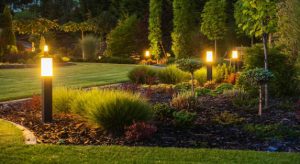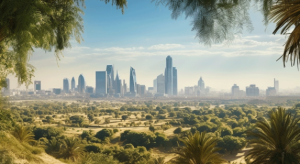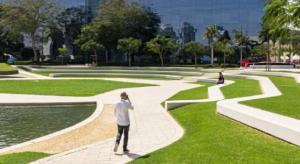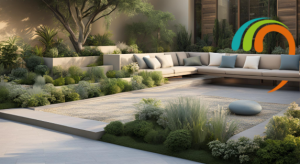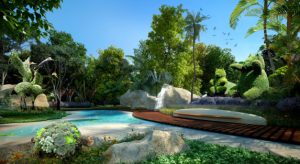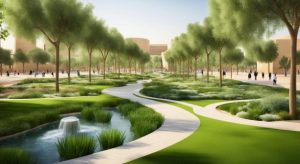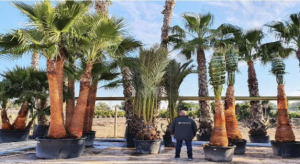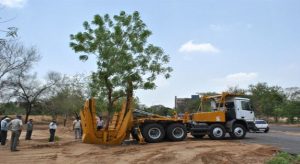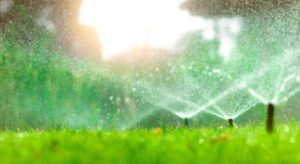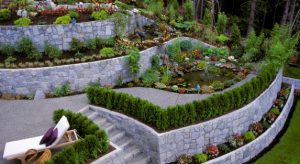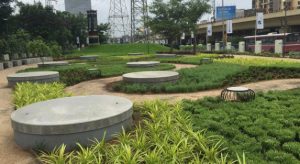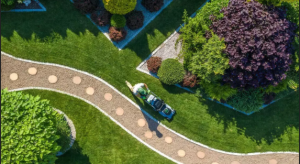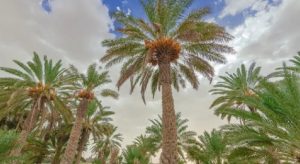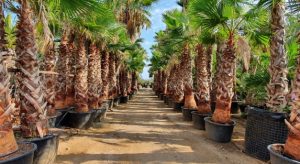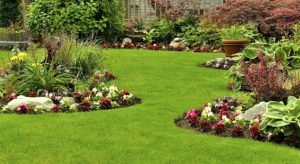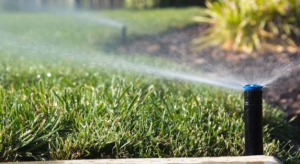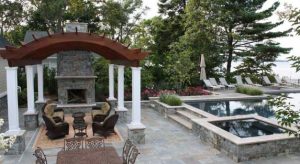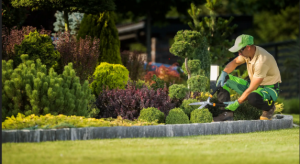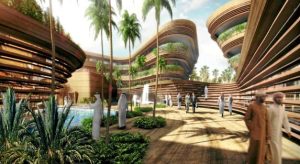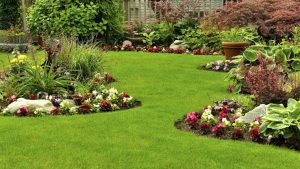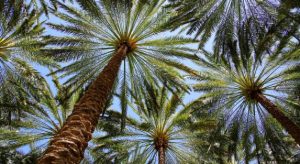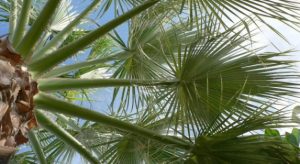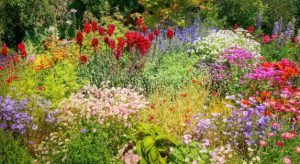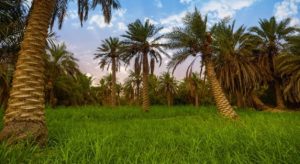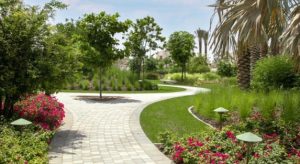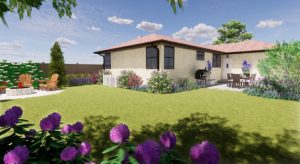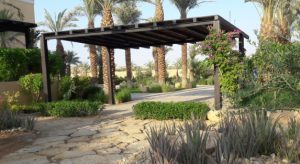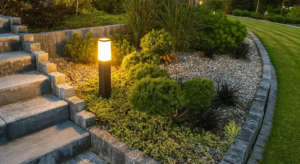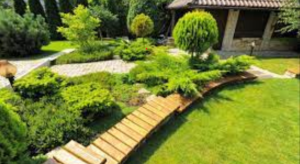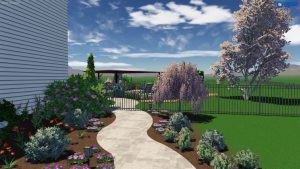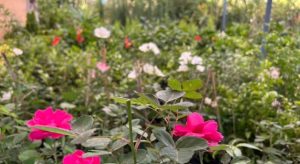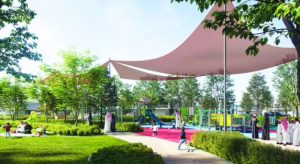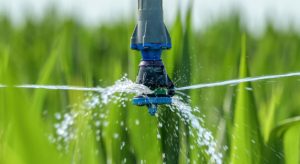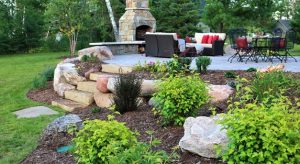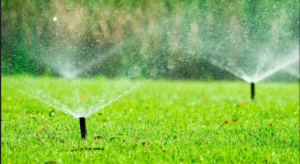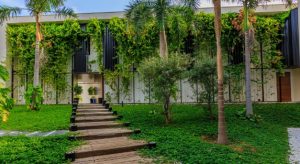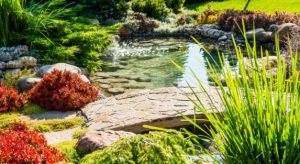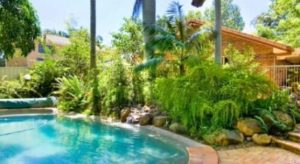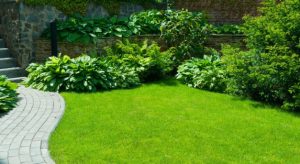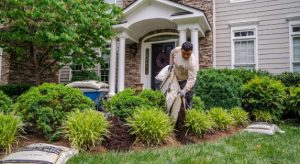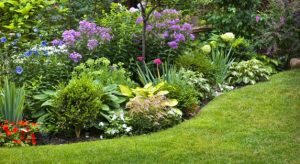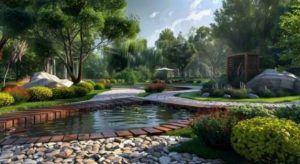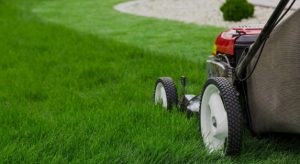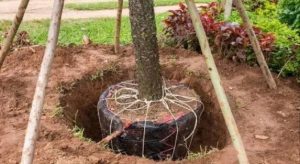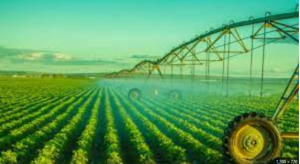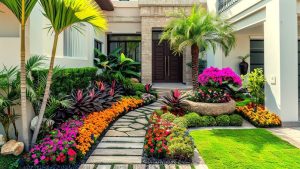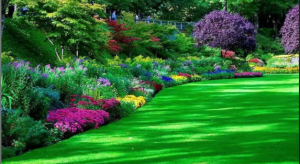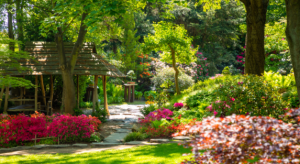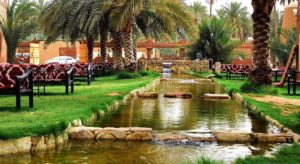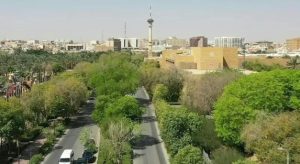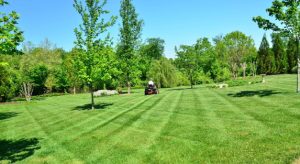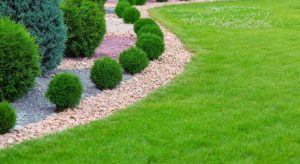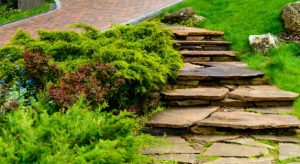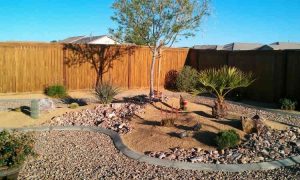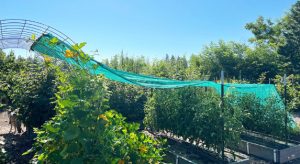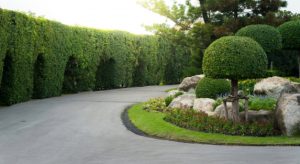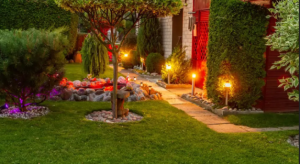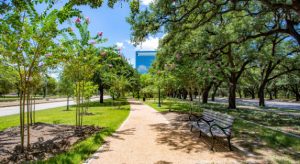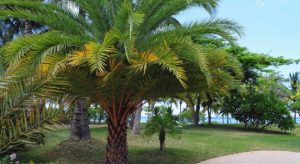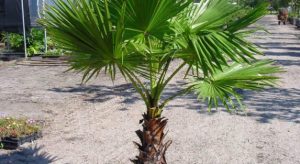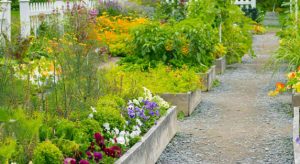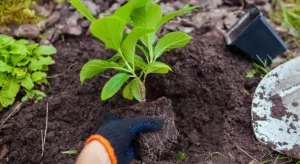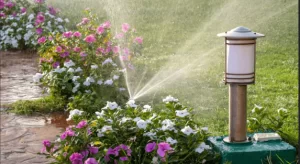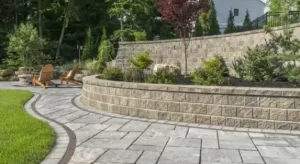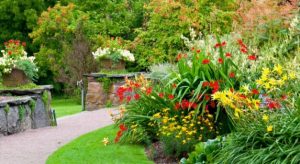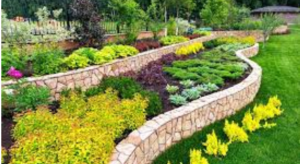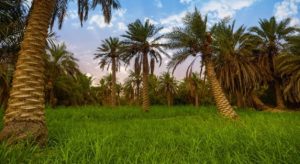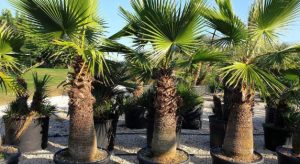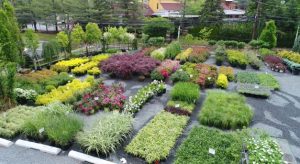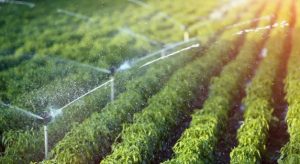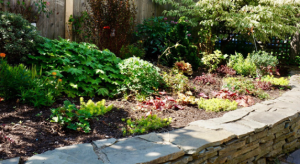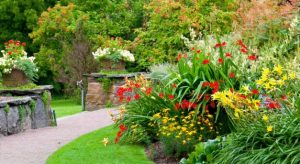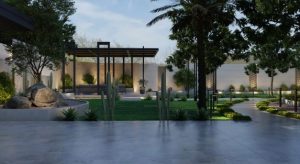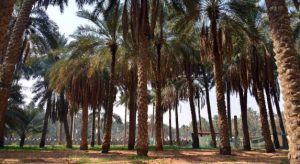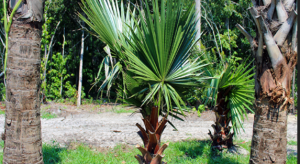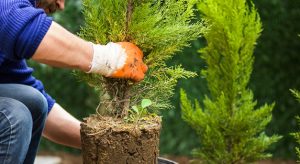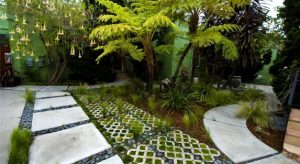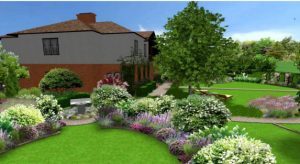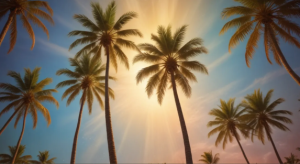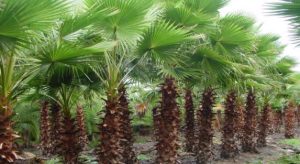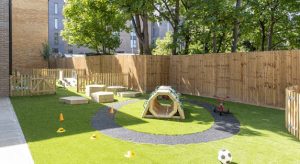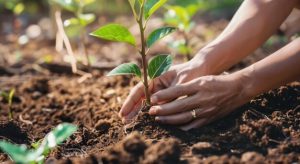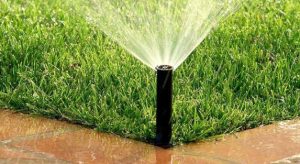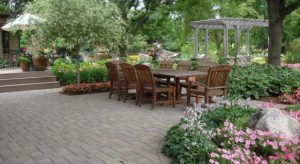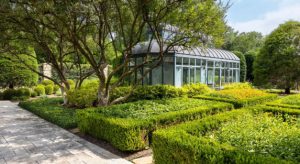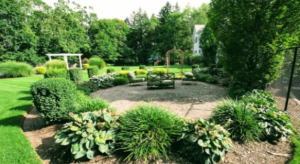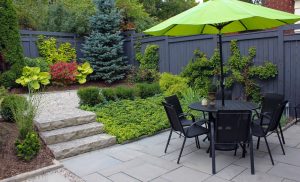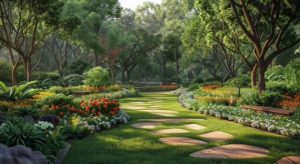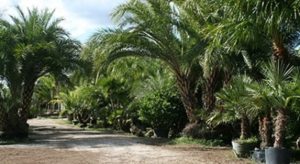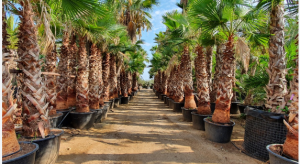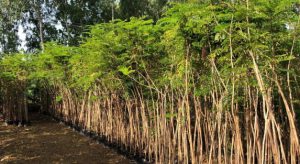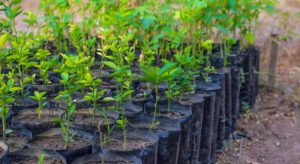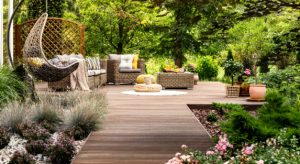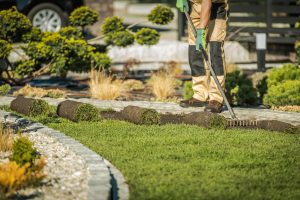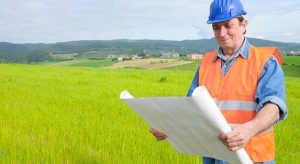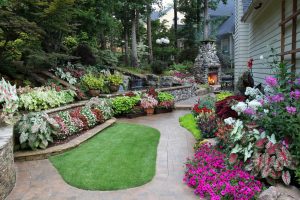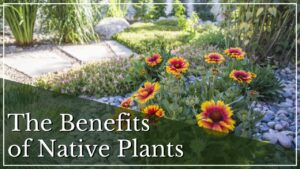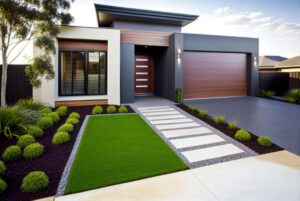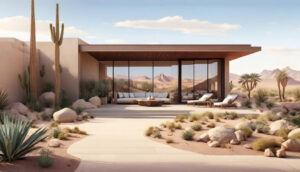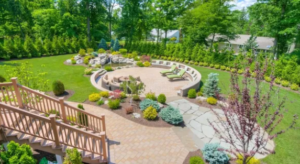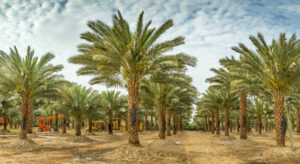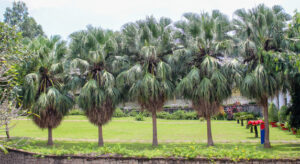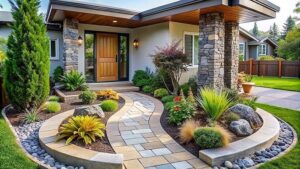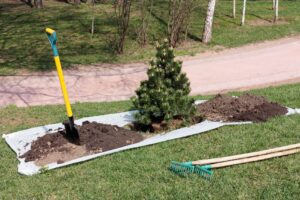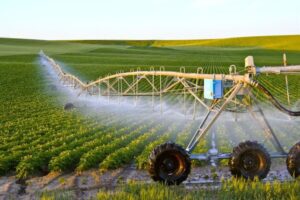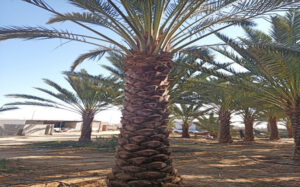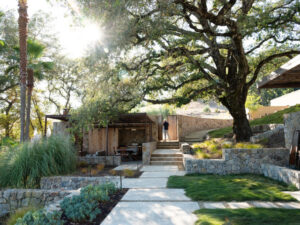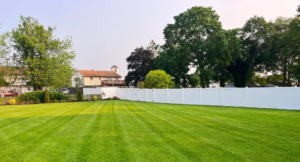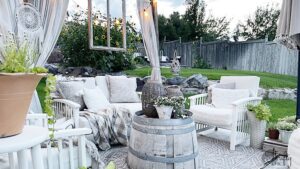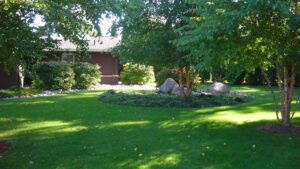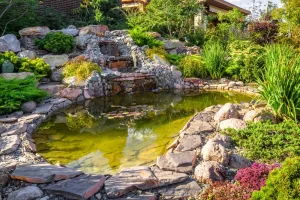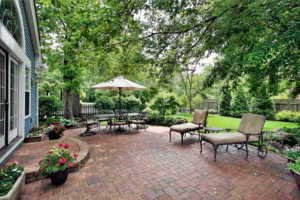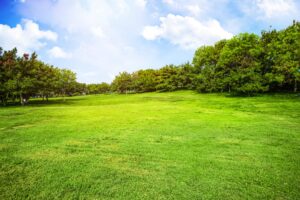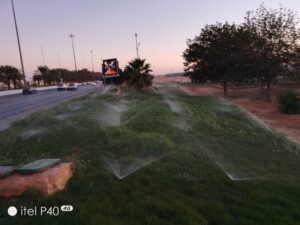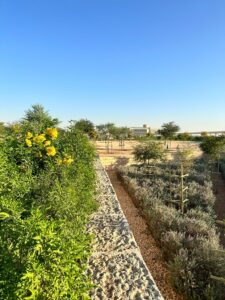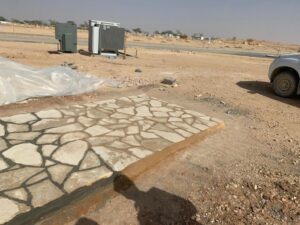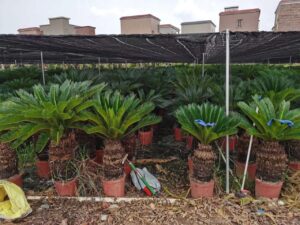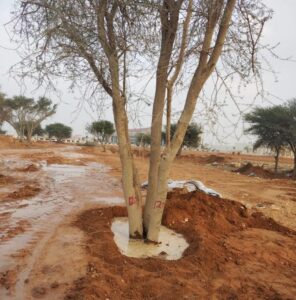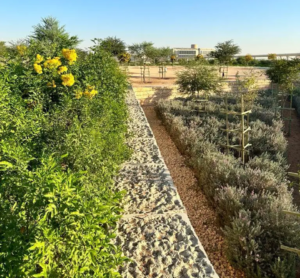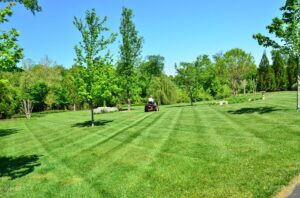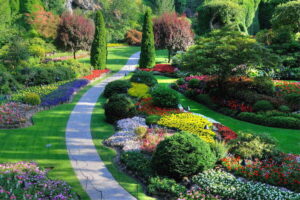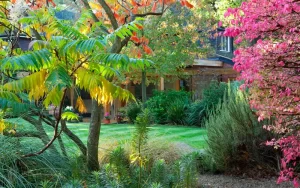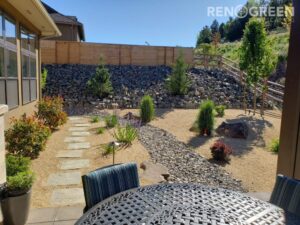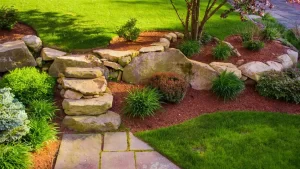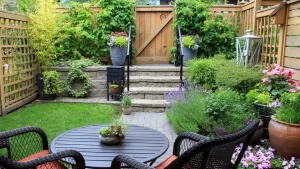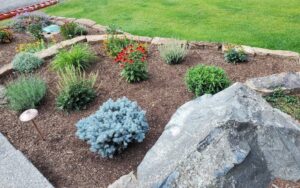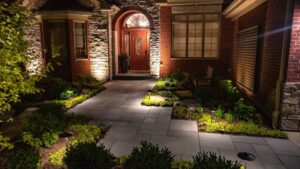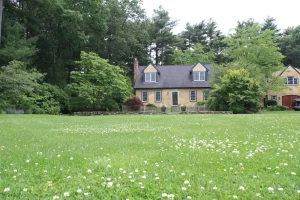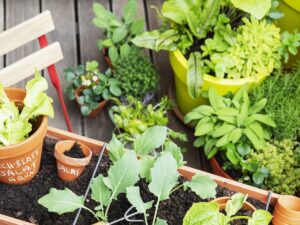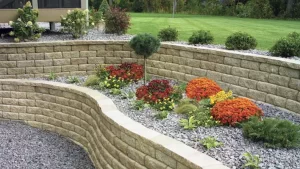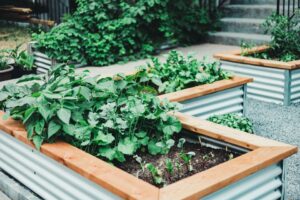How to Choose the Right Hardscape Elements for Your Saudi Arabian Landscape
22 July, 2025
Introduction: Why Hardscape Design Matters in Saudi Arabian Landscapes
Landscaping in Saudi Arabia isn't just about greenery; it's about blending natural beauty with practical design in a climate where water is scarce and heat is intense. This is where hardscape landscaping design in Saudi Arabia takes on a crucial role. Hardscaping involves the use of non-living elements—think stone paths, gravel beds, pergolas, retaining walls, and patios—to create functional, aesthetically pleasing outdoor environments. In Saudi Arabia, hardscaping is not a luxury—it's a necessity driven by climate, tradition, and the need for sustainable outdoor living.
Unlike softer landscape elements that rely heavily on irrigation and constant maintenance, hardscape features offer durability and structure. They can define areas, reduce water usage, and reflect the timeless elegance of Arabian architecture. Imagine a beautifully laid sandstone courtyard, shaded by a wooden pergola and lit with subtle uplighting—that’s the power of thoughtful hardscape design.
Moreover, in a culture that values hospitality and outdoor gatherings, especially during the cooler months, hardscape elements provide the ideal foundation for hosting. From evening teas in open courtyards to family barbecues under shaded structures, your hardscape design determines how well your landscape supports your lifestyle.
As urban development continues to rise across Riyadh, Jeddah, and Dammam, property owners are now more focused than ever on building functional yet stunning outdoor spaces. And hardscaping is at the heart of that transformation. This guide is designed to help you navigate the choices, understand the essentials, and select the perfect hardscape elements tailored to your specific needs and climate challenges in Saudi Arabia.
Climate-Smart Choices: Picking Materials That Endure Saudi Weather
The harsh climate in Saudi Arabia is unforgiving. With temperatures regularly crossing 45°C in summer and very little rainfall throughout the year, selecting the right materials for your hardscape features is a decision that requires both practicality and foresight. Not all materials are created equal—especially when exposed to intense sun, dry winds, and occasional sandstorms. That’s why smart hardscape landscaping design in Saudi Arabia starts with choosing materials that can withstand these extreme conditions while still offering aesthetic appeal.
Natural stones such as travertine, limestone, and sandstone are excellent choices. They remain relatively cool underfoot and complement the earthy tones of desert landscapes. Concrete pavers are another durable option that can be tinted to suit various color schemes. On the other hand, materials like asphalt or untreated metal may absorb too much heat, making them uncomfortable and even dangerous to walk on during peak hours.
Beyond heat resistance, it’s vital to consider materials that are low-maintenance and weather-resistant. Composite decking, for example, offers the appearance of wood without the warping, splintering, or fading associated with traditional timber. Gravel, decomposed granite, and decorative pebbles are also ideal for open areas, offering permeability and dust control.
When selecting materials, think long-term. Will this stone fade in the sun? Will this structure survive a sandstorm? Is it prone to cracking under temperature fluctuations? Consulting with local landscape experts who understand the Saudi environment can help you avoid costly mistakes and ensure your investment stands the test of time.
In essence, the right materials not only enhance your landscape’s visual appeal but also reduce maintenance, maximize comfort, and improve the overall usability of your outdoor space throughout the year.
Designing Functional Outdoor Zones with Hardscape Features
Incorporating functionality into your outdoor space is key to maximizing its potential. A well-planned hardscape landscaping design in Saudi Arabia should thoughtfully divide your yard into distinct zones that serve various purposes—entertaining, relaxing, dining, or even gardening. This not only brings order to your space but also ensures every corner is used meaningfully, especially in larger residential plots common across Saudi homes.
Start by observing your outdoor layout. Identify areas that receive natural shade, spots that get direct sun most of the day, and zones with high foot traffic. Then, assign functions to each: perhaps a stone-paved dining area beneath a pergola for family dinners, a gravel-lined walking path connecting the gate to the patio, and a tucked-away corner with a bench and water feature for quiet reflection.
Hardscape features like raised planters, retaining walls, seating benches, and tiled patios help define these areas with clarity. For example, a low stone wall can separate your garden from the kids’ play zone without obstructing the view. Fire pits or outdoor kitchens can transform a patio into an evening hangout spot during the cooler months.
In Saudi Arabia, where hospitality is culturally significant, having a well-designed majlis (outdoor sitting area) with shaded seating, comfortable flooring, and decorative tile accents can elevate the experience of entertaining guests. Using regional design elements like arches, patterned tiles, or lattice screens can also reinforce the cultural character of the space.
Functionality in hardscaping isn’t about filling every space—it’s about designing with purpose. Every element should serve a role, whether it’s guiding movement, offering comfort, or enhancing visual flow. With the right approach, your outdoor space will not only look good but feel natural and intuitive to use year-round.
Water Efficiency: Going Eco-Friendly with Gravel, Pebbles & Minimalism
Water is a precious commodity in Saudi Arabia, and its conservation is critical. Traditional landscaping elements like lush lawns and thirsty flower beds not only strain water resources but also demand time-intensive care. That’s where eco-conscious hardscape landscaping design in Saudi Arabia comes into play, offering stylish yet sustainable alternatives through gravel gardens, stone beds, and xeriscaping techniques.
Replacing lawns with gravel or decomposed granite is not just practical—it’s beautiful. You can create patterns, define pathways, and build visual interest using different textures and colors. Add decorative pebbles around trees, install stone seating walls, or use crushed stone as mulch around drought-tolerant plants like cacti and agave. These choices drastically reduce your need for irrigation while still maintaining a clean and modern aesthetic.
Another benefit of gravel and similar materials is their permeability. They allow rainwater to naturally seep into the ground, reducing runoff and encouraging groundwater replenishment—an eco-friendly solution especially in areas prone to occasional flash flooding.
To complement the dryscape, consider integrating local plants that thrive in Saudi’s arid environment. Succulents, native grasses, and even ornamental date palms require minimal care and water, making them ideal companions to your hardscape features. You can also include ceramic planters, stone sculptures, and shaded sitting zones to elevate the appeal of a minimalist garden.
Sustainability doesn’t mean sacrificing beauty. In fact, minimalist, low-water hardscape designs often result in the most serene, timeless landscapes. And with the rising popularity of eco-conscious living across the Kingdom, water-wise hardscaping is more than a trend—it’s a responsible lifestyle choice. With smart planning, your outdoor space can be both environmentally friendly and visually captivating.
Shade and Comfort: Designing with Pergolas, Gazebos & Covered Features
In the intense Saudi Arabian heat, especially during the daytime, providing shade in your landscape design is not a luxury—it’s a necessity. Creating cool, inviting outdoor areas requires thoughtful planning, and that’s where covered structures like pergolas, gazebos, tensile shades, and canopies become central to effective hardscape landscaping design in Saudi Arabia.
Pergolas are a particularly popular feature across homes in Riyadh and Jeddah. Not only do they offer practical sun protection, but they also add vertical interest and architectural beauty to your space. Whether made from treated wood, metal, or composite materials, pergolas can be customized with lattice panels, climbing plants like bougainvillea, or sheer drapes to soften sunlight while allowing airflow.
Gazebos, on the other hand, offer enclosed or partially enclosed relaxation spaces that work well for larger properties or garden corners. Add a ceiling fan, comfortable seating, and lantern-style lighting, and you have a stunning evening majlis perfect for gatherings or quiet moments.
For minimalist and modern homes, tensile shade structures provide futuristic appeal while serving a vital purpose. These UV-resistant fabrics can be stretched above patios, driveways, or playgrounds to reduce heat exposure and glare.
Comfort also comes from thoughtful placement. Install covered features where natural light is harshest, typically on west- or south-facing sections of your yard. Add seating areas with outdoor cushions, side tables, and built-in lighting for added functionality.
With the right shaded features, your outdoor space becomes usable year-round—even during the hottest months. Plus, incorporating shade into your hardscape design enhances the lifestyle quality of your home. It invites people to linger, laugh, and connect—turning your garden into a true living space and not just a decorative backdrop.
Cultural Aesthetics: Blending Traditional Elements with Modern Design
Saudi Arabia has a rich cultural history steeped in Islamic art, Arabian architecture, and desert heritage. To create a landscape that truly resonates, your hardscape design should respect and reflect these traditions while also embracing modern functionality. Achieving this balance is where thoughtful hardscape landscaping design in Saudi Arabia truly shines.
Start with layout inspiration from traditional Arabian courtyards or “hosh.” These enclosed spaces historically served as social hubs and were often adorned with patterned tiles, water fountains, and symmetrical layouts. By incorporating similar elements into your modern landscape—perhaps through a central water feature, geometric paving, or arched walkways—you honor heritage while meeting contemporary needs.
Materials also play a role in cultural expression. Consider using natural stones like limestone or travertine, which mirror the hues of desert architecture. Decorative ceramic tiles in mosaic or geometric Islamic patterns can accent stair risers, wall insets, or seating benches. Arabic calligraphy etched into stone plaques or fountains adds an artistic and spiritual touch.
Pergolas with mashrabiya-style screens not only provide privacy and shade but also evoke traditional design cues in a modern way. Combining these heritage-rich features with sleek, minimalist touches—like recessed lighting or polished concrete—can result in a stunning visual dialogue between old and new.
Even accessories can enhance cultural authenticity. Traditional lanterns, brass coffee sets, or Majlis-style cushions transform simple seating areas into evocative social spaces rooted in Arabian identity.
By blending tradition and innovation, your landscape becomes more than just functional—it becomes a reflection of your values, your history, and your vision. A well-integrated cultural aesthetic doesn’t just beautify your property; it connects your family and guests to a sense of place and purpose.
Low-Maintenance Living: Smart Design for Effortless Outdoor Beauty
In Saudi Arabia’s climate, maintaining a landscape can be time-consuming and costly without the right approach. That’s why more homeowners are turning to low-maintenance hardscape landscaping design in Saudi Arabia—a style that prioritizes ease of upkeep without sacrificing elegance or comfort. With smart choices, your outdoor space can stay beautiful year-round with minimal effort.
Start with materials. Opt for hardscape elements that are stain-resistant, weather-proof, and durable. Concrete pavers, composite decking, ceramic tiles, and natural stone surfaces require less cleaning and are more resistant to fading or cracking. Avoid wood unless it’s treated or composite, as it can warp and degrade in extreme heat.
Design-wise, reduce clutter. Instead of many small garden beds, go for a few large, well-defined areas. Raised planters made of stone or brick are easier to manage and offer a neat appearance. Choose native or drought-tolerant plants like date palms, desert roses, or aloes that require little water or pruning.
Another key to low-maintenance design is automation. Install a drip irrigation system connected to a timer to water plants efficiently without wastage. Use solar-powered lights along pathways and in seating areas for automatic illumination after sunset. Motion sensor lights also add security with zero manual handling.
Add practical touches like built-in seating, which eliminates the need to move outdoor furniture around. Choose gravel or decorative stone in high-traffic zones to prevent weed growth and soil erosion.
Lastly, organize regular but simple seasonal maintenance: power wash the stone surfaces, inspect irrigation lines, and refresh pebbles or mulch as needed. A few hours every few months can keep your landscape looking polished with minimal ongoing stress.
Low-maintenance design is about enjoying your outdoor space—not being burdened by it. When planned right, your landscape becomes a place of comfort, not chores.
Nighttime Ambience: Lighting Up the Desert Evenings
In Saudi Arabia, where temperatures can soar during the day, the real charm of outdoor spaces often comes alive after sunset. Whether it's a quiet evening under the stars or a weekend gathering with friends, nighttime functionality is a key component of any successful hardscape landscaping design in Saudi Arabia. And that starts with smart, stylish lighting.
Begin by identifying key areas that need illumination: walkways, steps, entrances, seating zones, and water features. Lighting in these areas not only improves safety but also adds layers of depth and beauty to the landscape. Think about warm, ambient lights that cast a soft glow rather than harsh spotlights that can disrupt the serene mood.
Solar-powered garden lights are an eco-friendly and efficient solution, especially for pathways and borders. They charge during the day and automatically switch on at dusk, requiring no ongoing maintenance. For a more luxurious feel, consider embedded LED strips in steps, under benches, or along walls—they create an elegant, floating effect while ensuring safe navigation.
Hanging lanterns or wall-mounted fixtures in traditional Arabian designs can enhance cultural ambiance. Drape string lights across pergolas or tree canopies for a festive, inviting atmosphere. If you have a water feature or sculptural centerpiece, use focused lighting to highlight its form and create a focal point.
Don’t forget smart lighting controls. Many homeowners now opt for app-connected systems that let them change colors, intensity, or timing remotely. This allows you to shift from party mode to a calming oasis with just a tap.
A well-lit landscape does more than extend its usability—it transforms your yard into a magical escape after dark. With careful planning, your nighttime hardscape can rival the beauty of daylight—and perhaps even surpass it.
Partnering with the Right Experts: Why Local Insight Matters
While DIY hardscaping might seem tempting, creating a seamless, functional, and culturally aligned outdoor space in Saudi Arabia requires more than Pinterest inspiration. The success of your project depends heavily on partnering with experienced professionals in hardscape landscaping design in Saudi Arabia who understand the nuances of the region’s climate, culture, and construction standards.
Local experts bring an intimate knowledge of materials that withstand the Saudi heat, sandy winds, and seasonal temperature swings. For instance, while marble may look great, it can become slippery when wet or too hot to walk on barefoot during summer. A seasoned landscape contractor will suggest safer, more durable alternatives such as sandstone, textured porcelain tiles, or rough-cut travertine—materials that balance aesthetics and functionality.
Equally important is their understanding of cultural aesthetics and zoning regulations. An experienced Saudi Arabian landscaping company will know how to blend traditional Islamic designs—like symmetrical layouts, mosaic tilework, or water features—with sleek modern architecture to suit your personal taste. They can also ensure your design aligns with municipal guidelines and property boundaries, preventing costly corrections later.
Additionally, local firms often have trusted networks of suppliers, meaning quicker turnaround times, cost-effective material sourcing, and skilled labor. Many also provide 3D design previews, which allow you to visualize your dream space before a single stone is laid.
Good communication is key—choose a firm that listens to your vision, explains processes transparently, and offers maintenance plans post-completion. A reputable contractor will treat your landscape not just as a project, but as a long-term extension of your home and lifestyle.
Ultimately, investing in the right team ensures peace of mind, saves time, and guarantees a landscape that’s both breathtaking and built to last. In a country where outdoor spaces are increasingly central to daily life, partnering with local hardscape professionals is a decision that pays off every season.
Conclusion: Crafting a Lasting Outdoor Impression with Smart Hardscape Choices
Designing the perfect outdoor space in Saudi Arabia isn't just about beauty—it's about balance, sustainability, and creating an environment that thrives under the region’s distinct climatic conditions. By carefully selecting hardscape elements—like shaded pergolas, heat-tolerant stone pavers, decorative walls, and water-saving features—you’re not just upgrading your backyard; you’re transforming it into a functional, year-round living extension of your home.
Choosing the right hardscape landscaping design in Saudi Arabia starts with understanding your space's needs, aligning your vision with practical solutions, and embracing materials that complement the harsh desert climate. It also involves being mindful of your lifestyle. Do you enjoy hosting large gatherings? Then an outdoor kitchen and spacious patio might be ideal. Prefer solitude and reflection? A tranquil water feature and intimate seating areas could be the right fit.
Cultural preferences also play a role. Many homeowners in Saudi Arabia appreciate traditional Islamic patterns and symmetry in their landscape, while others prefer sleek, contemporary lines and minimalist aesthetics. A successful design blends both worlds—offering a visually stunning yet deeply personal space.
Let’s not forget the importance of expert collaboration. Working with experienced landscape professionals who specialize in hardscape landscaping design in Saudi Arabia ensures that every decision, from stone selection to structural layout, aligns with local weather, soil, and regulations. It’s not just about building structures—it’s about crafting an experience.
In the end, your outdoor space should be more than just a backyard—it should reflect your taste, offer daily comfort, and add long-term value to your property. With thoughtful planning and the right team, your dream hardscape can become a reality that lasts for years to come.
- Fountain and Waterfalls
- Gardening
- hardscape
- Irrigation system
- Landscape
- Lawn
- Nursery
- Palm Tree
- Plantation and Maintenance
- softscape
- Tree Transplanting
- Washingtonian Tree
Categories
Latest Post
- Fountain and Waterfalls
- Gardening
- hardscape
- Irrigation system
- Landscape
- Lawn
- Nursery
- Palm Tree
- Plantation and Maintenance
- softscape
- Tree Transplanting
- Washingtonian Tree





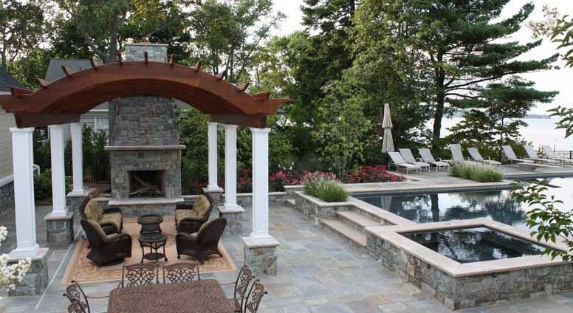
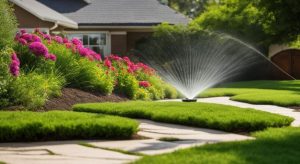
 .
.